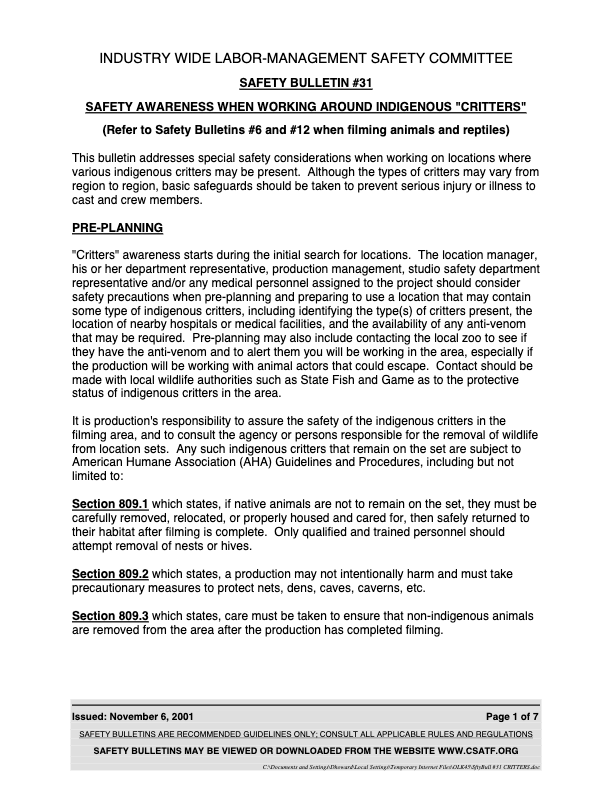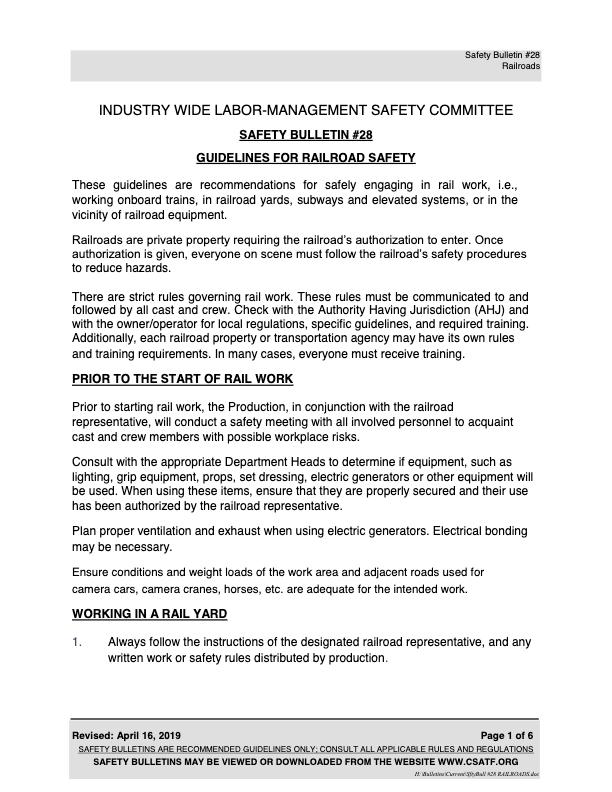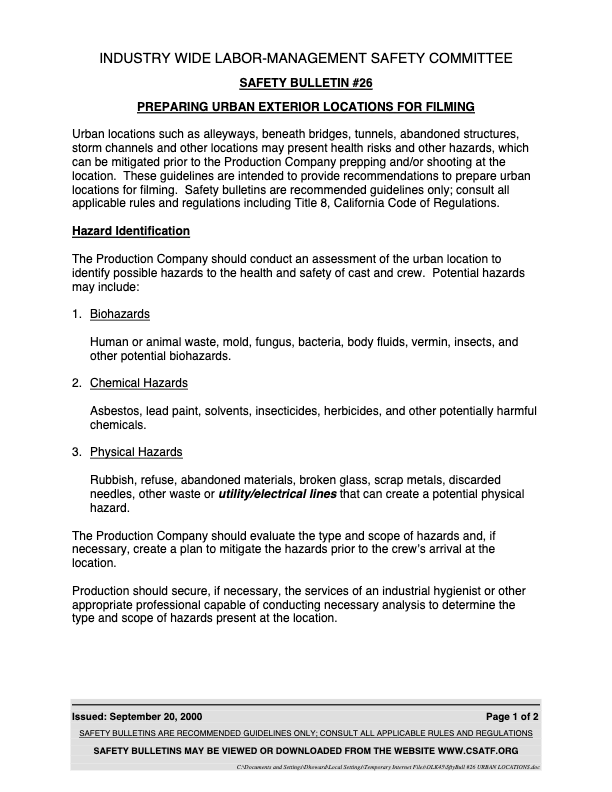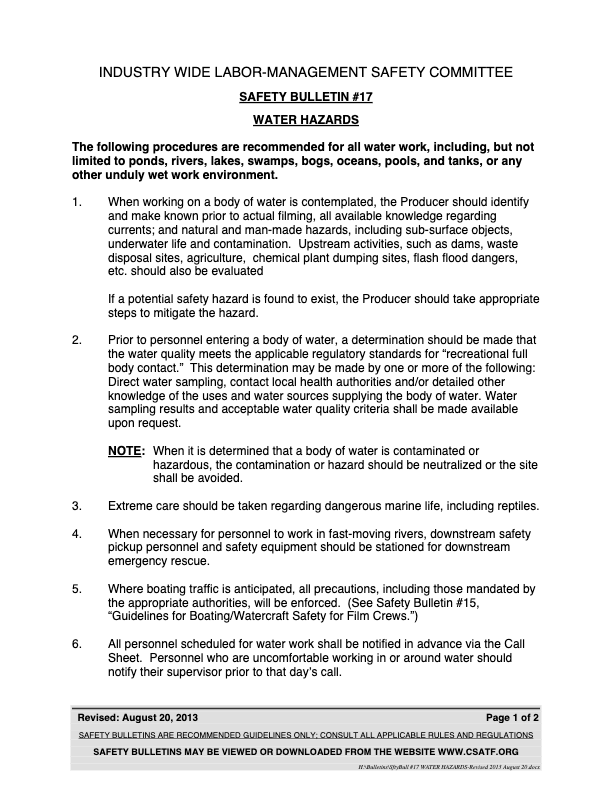Safety Bulletin

Guidelines
This bulletin addresses special safety considerations when working outdoors and exposed to nasty plants. Although the types of nasty plants may vary from region to region, basic safeguards should be taken to prevent serious injury or illness to crew members working at locations where these plants grow.
These plants (e.g., Poison Oak, Poison Ivy and Poison Sumac) cause an allergic reaction in about 90% of all adults. The oleoresin in the juice of these plants causes dermatitis in allergic people from contact from their clothes, tools, equipment, pet fur, or smoke of burning plants. The fluid from the resulting blisters does not contain oleoresin, and cannot cause dermatitis.
These irritating plants normally grow along fence rows, waste areas, open and cut over forest lands, stream banks, swamps, ponds and rocky canyons. In the fall, their leaves turn to brilliant red.
NOTE: People who have allergic reaction to these types of plants should notify production company and/or set medic prior to entering an area that is known to have these types of plants.
Protect Yourself
Clothing Guidelines – in areas where nasty plants are likely:
- Wear long pants with your pant legs tucked into your socks or boots. A good boot above your ankle can help protect you better.
- Wear long sleeves and a loose fitting shirt, and a ventilated hat.
- Cover as much skin as you can.
- All contaminated clothing should be washed separately with detergent.
- Wear protective gloves when handling.
- Wear practical change clothes and shoes before leaving the location. Work clothes should be placed in a bag and taken home for laundering.
General Safety Precautions
- Wash often. Wash hands before eating, smoking or applying cosmetics.
- Identify the areas that may contain the plants and use the proper safeguards to avoid them.
Identification
- Both Poison Oak and Poison Ivy are readily identified by their trademarked three- leaf pattern.
- Poison Ivy has its three leaflets with pointed tips, while Poison Oak has its three leaflets with rounded tips.
- Leaflets range from a half-inch (1/2”) to two (2”) inches long.
- Flowers are greenish white, about one-quarter (1/4”) inch across and are borne in clusters on a slender stem.
- The fruits are white, berry-like, glossy and dry when ripe; about one-sixth (1/6”) of an inch in diameter in Poison Ivy and slightly larger in Poison Oak.
- All parts of Poison Oak and Ivy are poisonous year round, except the pollen.
- Burning is not recommended; as inhaling dust and ash from the smoke can result in poisoning of the lungs that can require hospitalization.
Poisoning
- The poisonous sap is carried in the roots, stem, leaves and fruit.
- The plant is bruised, the sap is released.
- It is easier to contract the dermatitis in the spring and summer due to the tender nature of the leaves.
- Sap may be deposited on the skin by direct contact with the plant or by contact with contaminated objects such as shoes, clothing, tools, equipment and animals.
Symptoms
- The interval between contact and the appearance of dermatitis will vary considerably.
- Most people will develop dermatitis 24 to 48 hours after contact.
- Blistering will follow moderate itching or burning sensation.
- Blisters usually rupture and are followed by oozing of serum and subsequent crusting.
- Healed areas often remain hypersensitive to further contact for several months.
- Although extremely irritating, most cases disappear in a week to 10 days.
Treatment
- Thoroughly wash the skin with soap and water (brown soap is best)
- Apply anti-itch lotion, such as Calamine or Caladryl.
- In severe dermatitis, cool wet dressings or compresses will be required. Heat releases histamines, which cause the intense itching.
- A physician should examine severe rashes, especially those covering large areas or accompanied by abnormal body temperatures.
- Medical treatment is most effective if applied before the oozing sores appear.
- All exposures should be reported to the set medic.
Other Poisonous Plants
Other plants that can cause mild to severe dermatitis include:
- Stinging nettle
- Crown of thorns
- Buttercup
- May apple
- Marsh marigold
- Candelabra cactus
- Brown-eyed Susan
- Shasta daisy
- Chrysanthemum




